Apollo 16 at 50: Lunar highlands not created by volcanoes, crew brought back 26-pound moon rock
- Oops!Something went wrong.Please try again later.
- Oops!Something went wrong.Please try again later.
Apollo 16 was notable not for the news it made but the news the crew received while on the lunar surface in 1972.
During an April 21 moon walk, mission Commander John Young received a message from Mission Control. He was told Congress had just passed the space budget, which included approval for development of the space shuttle.
Given that Apollo 16 was the second-to-last Apollo mission after the program had been canceled, this was welcomed news.
Young replied, “I’m proud to be an American.”
Roughly nine years later, Young was one of the first two astronauts to fly on the inaugural space shuttle mission, dubbed STS-1.
Saturday, April 16, marks the 50th anniversary of the lift-off of the Apollo 16 crew on an 11-day mission. In addition to Young, the crew included Lunar Module Pilot Charles Duke and Command Module Pilot Ken Mattingly.
Among the mission's successes: the crew brought back the largest moon rock collected on any of the missions.
The two crew members on the surface — Young and Duke — spent a then-record 20-plus hours conducting moon walks (the record was later broken by Apollo 17).
Here’s what else to know about the Apollo 16 mission.
The "lesser" known Apollo missions:
Apollo 12 at 50: Lightning nearly doomed the mission
Apollo 14 at 50: Shepard's return, a weather delay and a historic golf swing
Apollo 15 at 50: A new rover, a 'Genesis Rock' and the first deep space EVA
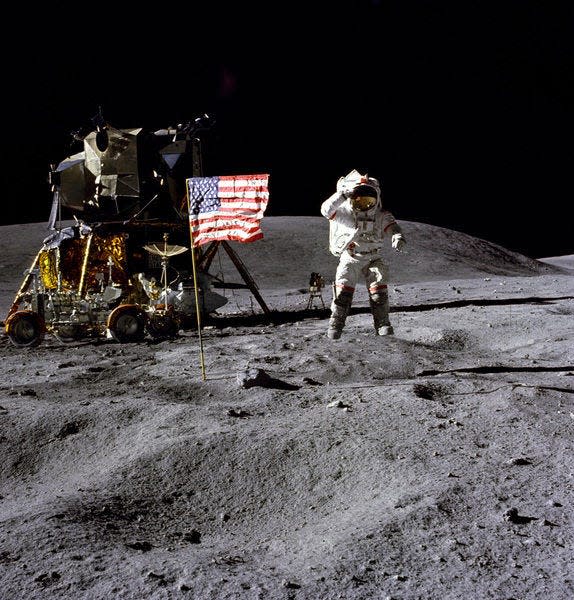
The crew
Young became an astronaut in 1962 as part of NASA Astronaut Group 2. At the time of Apollo 16, he was a 41-year-old Navy captain who had flown three prior missions to space: Gemini 3 (1965), Gemini 10 (1966) and as command module pilot of Apollo 10 (1969), the final flight to pass by the moon before astronauts landed on it.
Mattingly, a lieutenant commander in the Navy at the time of Apollo 16, had been selected in NASA's fifth group of astronauts in 1966. He was 36 at the time of Apollo 16 and had served as a member of the support crew for Apollo 8 and 9. Mattingly was originally assigned to the prime crew of Apollo 13, but was exposed to rubella through Duke, who at that time was on Apollo 13’s backup crew with Young. Mattingly never contracted the illness, but three days before launch was removed from the crew and replaced by his backup, Jack Swigert. Gary Sinise famously played the role of Mattingly in the Tom Hanks Apollo 13 movie.
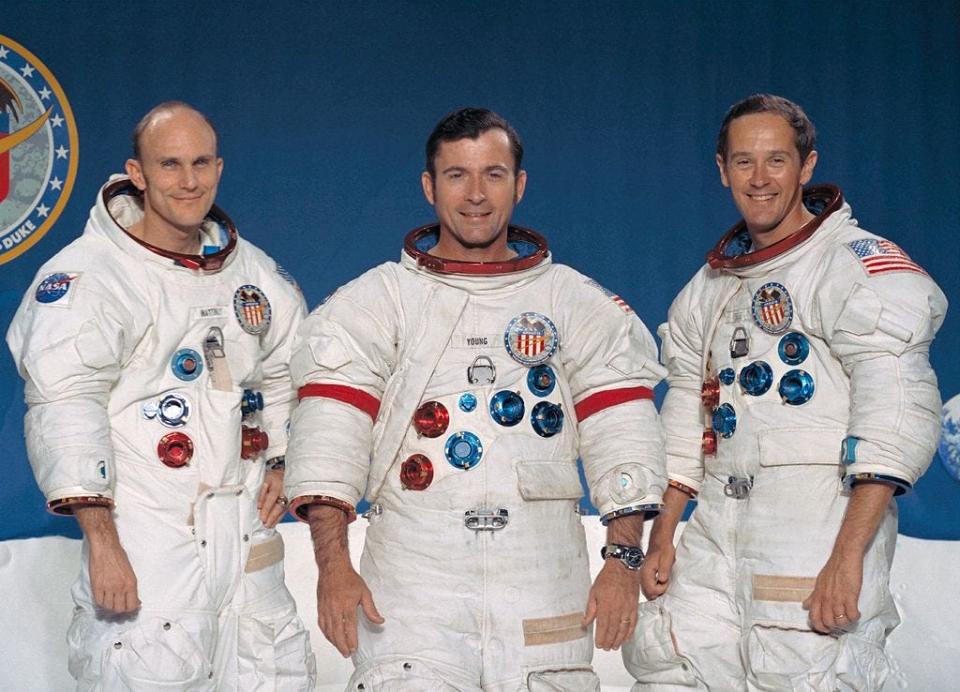
Duke, also a Group 5 astronaut, had served on the support crew of Apollo 10 and was a capsule communicator (CAPCOM) for Apollo 11. Apollo 16 was his first flight to space. Duke, 36 like Mattingly, was a lieutenant colonel in the Air Force at the time of Apollo 16. However, being about six months younger than Mattingly, who didn't go down to the surface, Duke became the youngest person to walk on the moon. He still holds that title today.
The mission
Apollo 16 was more of a fact-finding mission as there was no major new hardware or procedures to test on the lunar surface.
Scientists sought information on the Moon's early history, which they thought might be obtained from the lunar highlands. The highlands had not been visited on previous missions.
Several members of the scientific community noted the central lunar highlands resembled regions on Earth that were created by volcanos and hypothesized the same might be true on the Moon. They hoped scientific output from the Apollo 16 mission would provide an answer. The answer turned out to be no: the highlands were not created by volcanos.
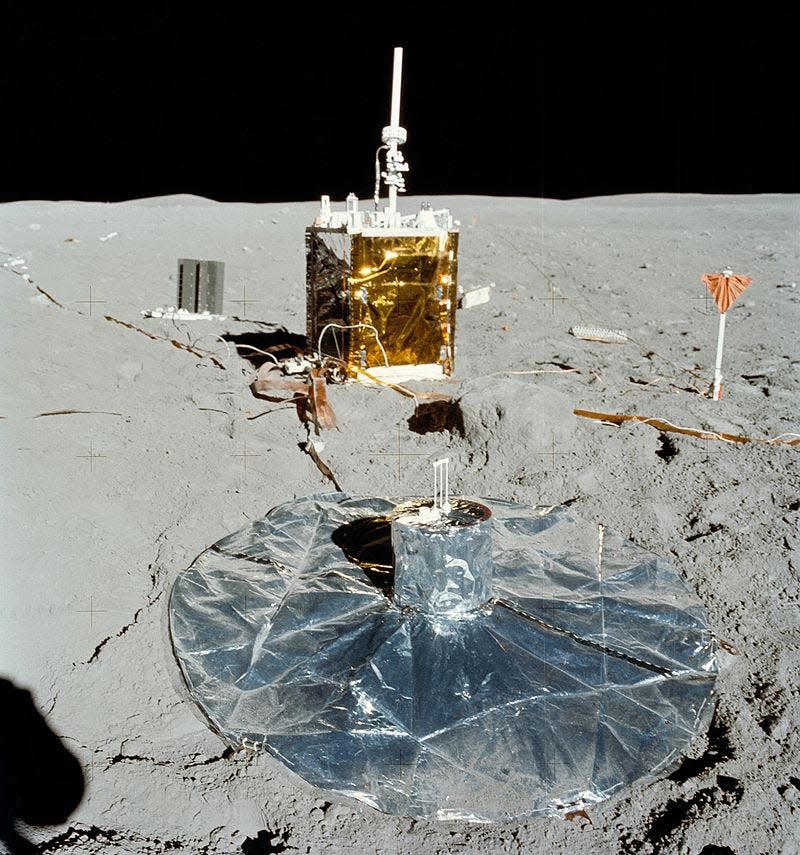
The mission also delivered several nuclear-powered experiments designed to measure seismic activity long after the crew departed, as well as the Particles and Fields Subsatellite (PFS-2), a small satellite released into lunar orbit from the service module.
The principal objective was to measure charged particles and magnetic fields all around the Moon as the Moon orbited Earth.
The landing spot
Among three sites considered, the Descartes site was chosen. With the assistance of orbital photography obtained on the Apollo 14 mission, the Descartes site was determined to be safe enough for a crewed landing.
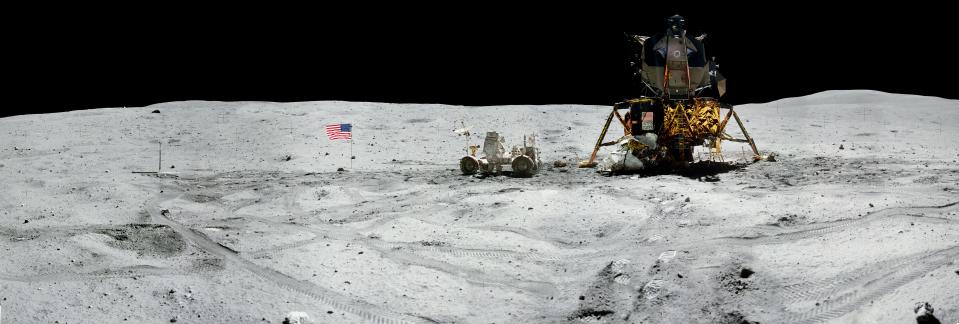
The specific landing site sat between two young impact craters, North Ray and South Ray — 3,280 and 2,230 feet in diameter, respectively — which provided "natural drill holes" which penetrated through the lunar regolith at the site, thus leaving exposed bedrock that could be sampled by the crew.
After the selection, mission planners made the Descartes and Cayley formations, two geologic units of the lunar highlands, the primary sampling interests of the mission.
It was these formations that the scientific community widely suspected were formed by lunar volcanism, but this hypothesis was proven incorrect by the composition of lunar samples from the mission.
The launch
Apollo 16 was originally scheduled to launch on March 17, 1972. Several issues caused the delay until April 16, 1972.
The official mission countdown began on Monday, April 10, 1972, at 8:30 a.m., six days before the launch. The astronauts underwent their final preflight physical examination on April 11.
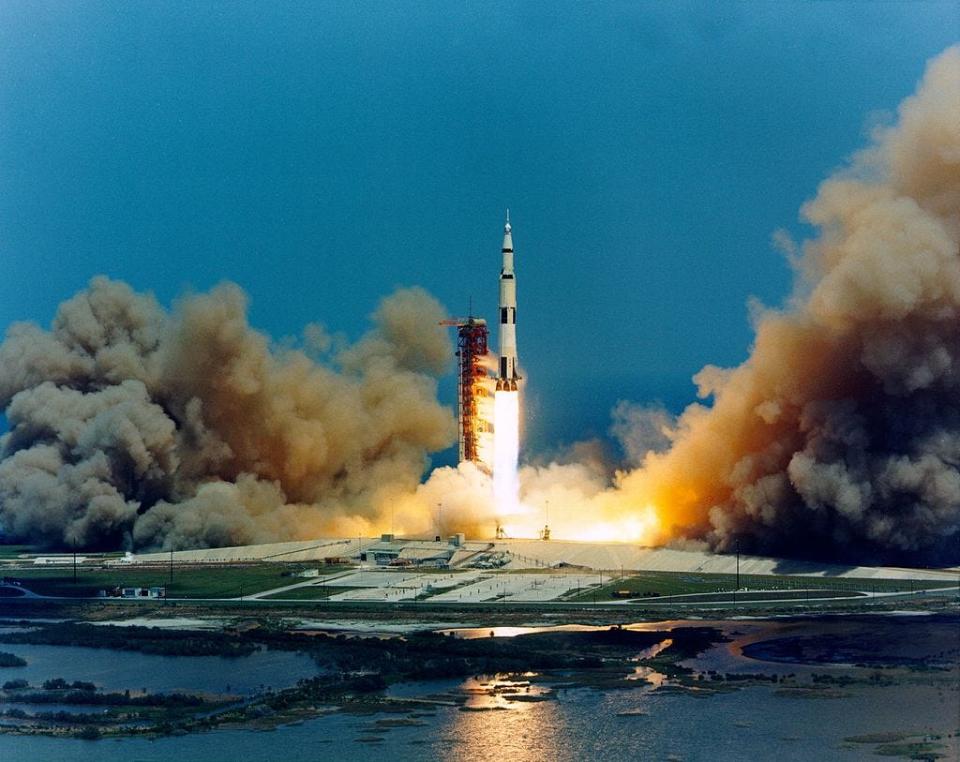
Apollo 16 blasted off from Kennedy Space Center at 12:54 p.m. on April 16, 1972. Aside from one minor issue while still in Earth’s orbit, everything went smoothly as the crew cruised toward the moon.
After waking up on flight day four, the crew began preparations for the maneuver that would brake them into orbit.
The following day they headed toward the surface of the moon on the lunar lander named Orion.
Moon walks and moon rocks
The crew spent 20 hours and 15 minutes doing Extravehicular Activities (EVAs or moonwalks).
They were the second crew to cruise around in the lunar rover, clocking just over 16 total miles.
While there they collected a moon rock that became known as Big Muley — the largest sample returned from the Moon as part of the Apollo program. The 26-pound rock is named after Bill Muehlberger, the Apollo 16 field geology team leader.
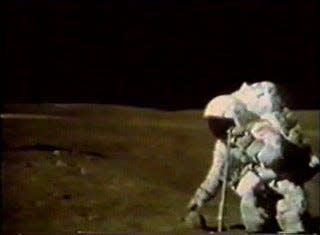
Big Muley is currently stored at the Lunar Sample Laboratory Facility at the Lyndon B. Johnson Space Center in Houston, Texas.
They successfully deployed all their scientific equipment and experiments and spent roughly three total days on the moon.
On April 24, they left the surface of the moon to meet up with the Command Module Casper, which Mattingly named after the famed Friendly Ghost.
But before leaving, Duke left a sealed picture of his family on the moon.
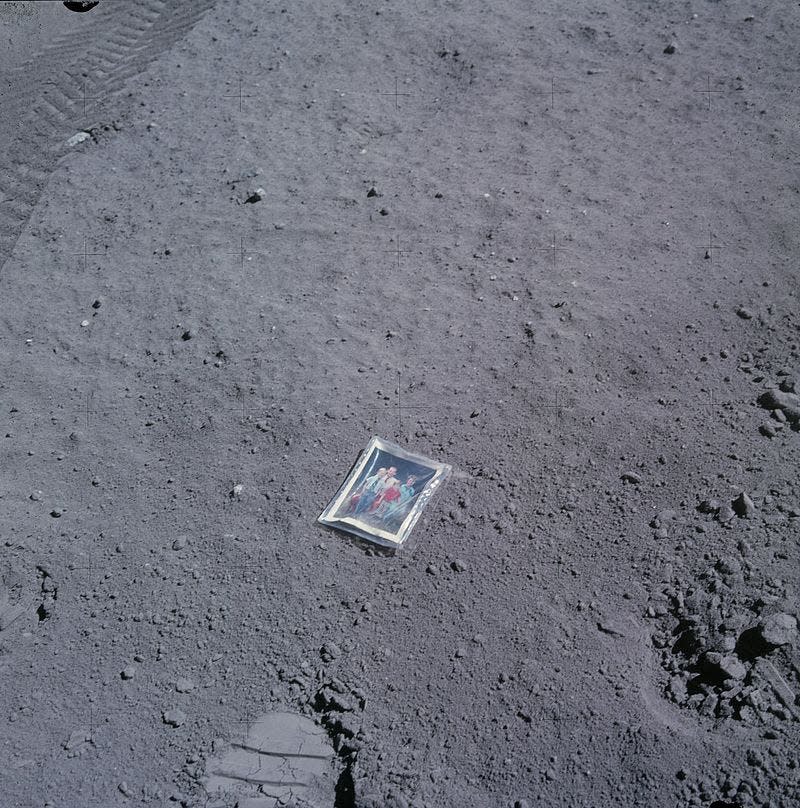
Return to Earth
After returning to the Command Module, the three astronauts headed back toward Earth. Along the way, Mattingly performed an 83-minute EVA to retrieve film cassettes from the cameras in the SIM bay, with assistance from Duke, who remained at the command module's hatch. At approximately 199,000 miles from Earth, it was the second "deep space" EVA in history.
The crew splashed down in the Pacific Ocean at 3:45 p.m. Eastern Time on April 27, 1972. The spacecraft and its crew was retrieved by the aircraft carrier USS Ticonderoga.
The Apollo 16 command module Casper is on display at the U.S. Space & Rocket Center in Huntsville, Alabama, following a transfer of ownership from NASA to the Smithsonian in November 1973.
This article originally appeared on Florida Today: Apollo 16 crew: Astronauts set record with moon walk, largest moon rock

